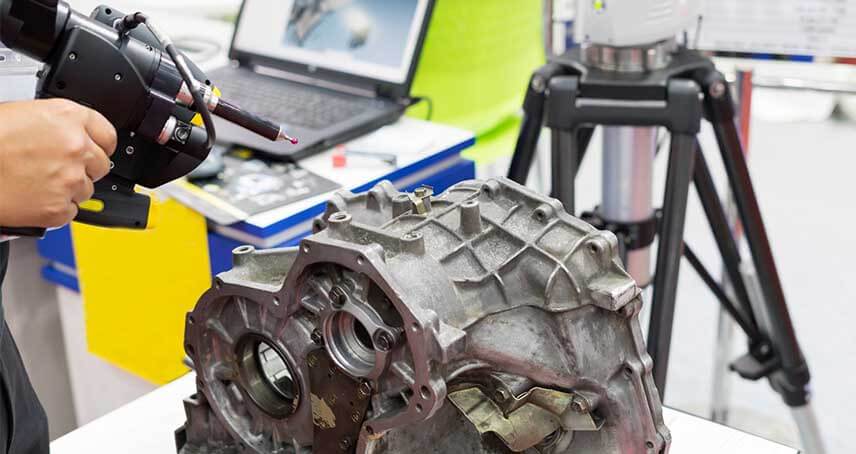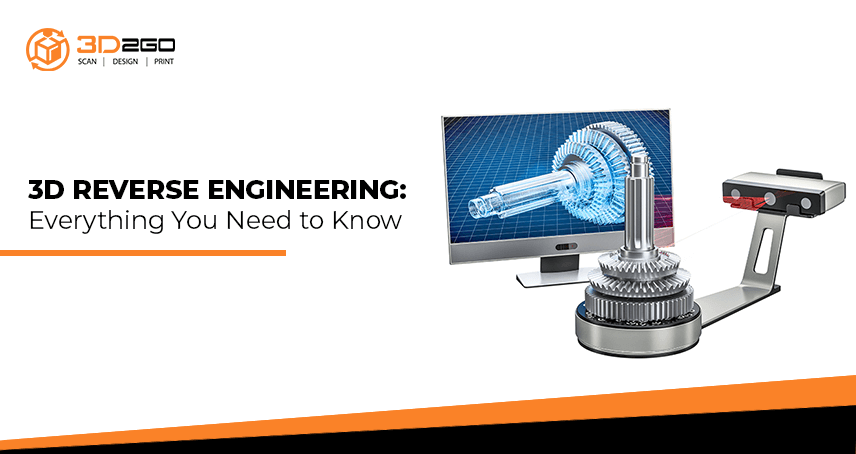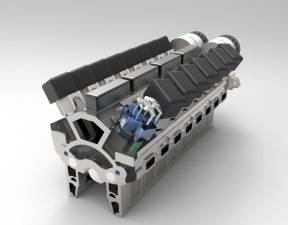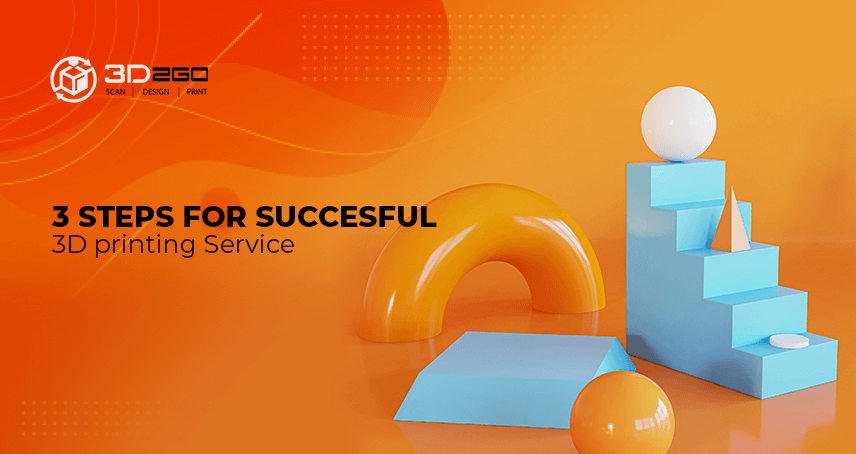
3 Steps For Successful 3D Printing Service
June 20, 2022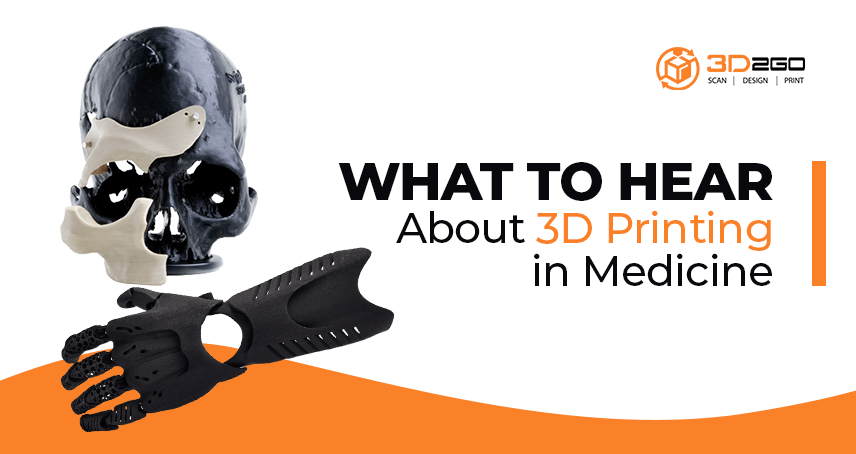
What To Hear About 3D Printing in Medicine
June 20, 2022How does 3D Reverse Engineering works?
As it consistently develops, technology continues to make many things possible.
We are now at an age where lost formulas can now be retrieved and lost designs recovered through the use of reverse engineering – the process of finding the composition of an object through breaking it down and then reconstructing it.
What is Reverse Engineering?
Before we delve into the processes of reverse engineering, let’s define this new technology.
Reverse engineering is the process of recreating an object through specialized tools. This is done by analyzing the object and its composition through disassembling it to examine its contents in an effort to accurately recreate or reproduce it.
But aside from recreating and reproducing an object – especially in cases where the object is either obsolete or has lost its recipe for good – reverse engineering is also used in analyzing objects and their function to identify areas that are in need of improvement, in order to effectively create solutions and reinforcements to improve these areas.
3D Has Changed Reverse Engineering
3D technology has completely transformed reverse engineering.
With the use of 3D scanners, objects and designs can conveniently be analyzed to accurately acquire its composition.
The existence of this reverse engineering technology has taken engineering, architecture and design to a whole new level, with more concepts being available to be redesigned, recreated, reproduced, and even revived.
Essentially, 3D reverse engineering digitizes the composition and design of the object, accurately storing and recovering its data for future use, be it for reproduction or quality control.
This enables manufacturers to preserve formulas and design, as well as to constantly develop the object’s functionality through its digitized data – which definitely comes in handy for both research and manufacturing purposes.
In areas such as engineering and other actualized sciences, 3D reverse engineering proves to be useful in creating and developing parts, as well as constantly improving performance by using digitized data as reference.
What Makes Accurate 3D Reverse Engineering
3D Reverse Engineering is a technical process, which requires specialized equipment – such as 3D scanners – and trained professionals to facilitate. While relatively new and is still yet to be normalized, 3D reverse engineering is slowly making its way too many industries, especially in areas that are industrial in nature.
After scanning the object, the 3D scanner should accurately create a CAD model of the object with the correct dimensions.
This model will serve as the point of reference for multiple purposes, which could be used to analyze, study, and optimize the object and its function, to accurately reproduce a replica or a prototype, or to reproduce for mass consumption.
The 3D Reverse Engineering Process
Now that we’ve tackled 3D reverse engineering and everything that it brings to the table, it’s time to delve into the process:
Object
The object is the focal point of the process, so this is where everything begins. The object to be scanned is prepared and examined, noting its dimensions and other details that will be used as reference for accuracy.
3D Scanning
Once everything is ready, the object is scanned by a 3D scanner. This inputs the object and all its data, and is recreated as a digital model.
The digital model is expected to have the accurate size, dimensions and general composition of the object’s design. Once the model is created, the user is free to analyze, examine, adjust and troubleshoot it for any purpose.
Surface Reconstruction
After the object is scanned, surface reconstruction – the capturing of the image – accurate shape, appearance, dimensions – of the object occurs. This encodes all the dimensions and design elements of the object into the generated digital model.
Feature Detection
Feature Detection takes note of the specific physical structures of the object – points, edges, planes – 3D features that define the dimensions of the object. This is important, especially if the purpose is to reconstruct the object.
Possible Outcomes
Once the object’s likeness and details have been encoded into the generated digital model, there are two possible outcomes –the object is either replicated in another physical form, or simply stored as a digital data for further research and development.
Feature Modeling
Feature Modeling is the process of creating a model based on the features of an object. This usually is a diagram of the object’s composition, as a sum of many parts of a whole. This is often used for research and development, as this gives insight into the inner workings of the object.
Surface Modeling
If the purpose is to recreate or reproduce the object, surface models are created. Surface modeling is creating a 3D image of the object with the accurate dimensions and design elements, if there are any. Due to the accuracy of the 3D scanning process, surface models are expected to be identical to the object itself.
Reverse Engineering 3D Printing
After successfully 3D scanning the object, digitally collecting its dimensions, design elements and features and making improvements and necessary changes, the model is ready to be manufactured.
3D printing would be a convenient and effective way to materialize the model, as it is guaranteed to reconstruct the object faithful to the model.
3D Reverse Engineering Is Closer Than You Think
While it’s easy to think that 3D reverse engineering is far-fetched, the technology is much more available to you than you think.
Nowadays, many 3D services providers are bringing the technology closer to the public, beyond industrialists and researchers, but to students, hobbyists and entrepreneurs as well, in the hopes of creating a big leap in design and engineering.
3D2GO is a pioneer of 3D services in the Philippines. Since our founding in 2013, we continue to provide prime, top-of-the-line 3D services to businesses, students, and hobbyists alike.
With our team of dedicated 3D artists and technicians, along with our specialized state-of-the-art 3D equipment, we only deliver the best, as we have always been for the past 8 years.
3D2GO offers top-tier 3D Scanning, 3D Reverse Engineering and 3D Printing.
From 3D mapping, scanning, printing and reverse engineering, 3D2GO is your one-stop shop for all your 3D needs.
Let us make your project a reality and contact us here for details.



